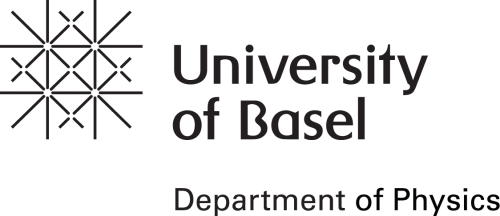Gas seeding in fusion reactors is used to reduce the power loads on the tungsten divertor. For this purpose, nitrogen has been selected as seeding species because of its radiative properties and contribution to the plasma confinement. However, once ionised in the fusion plasma, the nitrogen ions and radicals will form stable compounds with the hydrogen isotopes, deuterium (D) and tritium (T). As a result, ammonia isotopologues (e.g., ND2T) will be formed along the operation of the reactor. For the next fusion reactor ITER, the amount of tritium available for fuelling and the allowed inventory is limited and therefore it is of paramount importance to minimize the quantity of ammonia produced.
This Master proposal aims at characterizing N2-H2 radiofrequency discharges produced at different conditions (e.g., input power, pressure, concentration) in the cylindrical metal-free chamber at the University of Basel, Switzerland [1]. Different techniques are available in Basel such as mass spectrometry, Langmuir probe or Optical Emission Spectroscopy, which allow the study of the plasma chemistry (e.g., concentration of the heavy species) and electron population properties (i.e., density, temperature, energy distribution function). The experimental results are meant to be compared with the modelling of N2-H2 plasmas carried out at Instituto de Plasmas e Fusão Nuclear (FuseNet member) in Lisbon, Portugal. The modelling work shall consider a description of the electron and the heavy-species kinetics in the plasma volume, the transport of species towards the wall and the surface kinetics, accounting for the heterogeneous catalytic formation of ammonia at the wall. Self-consistent simulations will use the LisbOn KInetics (LoKI) tool [2], coupling a Boltzmann solver and a Chemistry solver, to obtain the electron energy distribution function and the densities of the most relevant heavy species with the plasma.
The prospective student should send us a Curriculum Vitae, motivation letter, and transcript of records.
[1] M. B. Yaala, et al., Phys. Chem. Chem. Phys., 21 (2019) 16623
[2] https://nprime.tecnico.ulisboa.pt/loki/
Supervisors
Rodrigo Antunes (rodrigo.antunes@unibas.ch), Univ. Basel, Switzerland
Luís L. Alves, IST/Univ. Lisbon, Portugal
Luís Marques, CF/Univ Minho and Porto, Portugal
Contact details
University of Basel
Department of Physics
Klingelbergstrasse 82
4056 Basel, Switzerland
https://nanolino.unibas.ch/
Dr Rodrigo Antunes
T +41 61 267 37 30
rodrigo.antunes@unibas.ch

